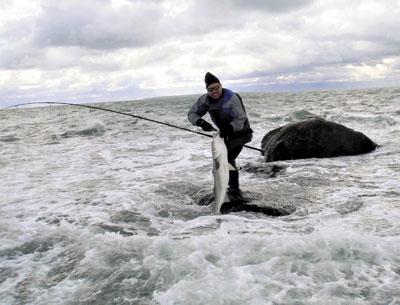The Smell of the Place

It’s the smell, finest kind. When I first ventured to the East End in the late 1960s a community existed here that I knew virtually nothing about, yet I recognized them.
This could be because my mother’s side of the family were farmers. As I’ve written here before, my grandfather was an apple grower in Nedrow, N.Y., south of Syracuse. My uncle Scott had a small dairy farm. Uncle Scott was a tall man with bowed legs and so walked with a strange rolling gate.
When my mother and I visited, he’d lead me down — rolling along like a sailor — to the barn before dawn when he started the milking. The cats waited for their morning squirt of milk from the udders, which Uncle Scott never failed to deliver. When I think of the scene, it’s the smell that comes first — hay, manure, fresh milk, an old barn.
That smell, stored by some wonderful chemistry in the brain, I attached to Uncle Scott and a man named Amos who helped on the apple farm, to my grandmother, to the farms and their people, people deeply rooted to a place.
One very early morning many years later, I was fortunate enough to be invited to have bluefish and pancakes at the home of Capt. Bill Lester in Amagansett. I had just sat down when Calvin, his son, showed up with the old man’s daily supply of fresh clams to eat. It was a ritual, the same as my grandfather Hitchings having his breakfast slice of apple pie that my grandmother always had on hand.
On Friday, I drove to the Lester shucking shack in Amagansett for scallops. The state waters in Northwest Harbor had opened the previous Monday, and news of a fairly bountiful crop was raising spirits throughout town.
Opening the door to the shack . . . well, if you could bottle it, slap a label on it, call it Eau du Bonac, you’d put Shalimar to shame. There is no finer aroma than the sweet, muddy, fecund scent that fills a shucking shack and forever attaches itself to the baymen and women in high spirits working their knives through the piles of shellfish before them, people of this place. Yes, yes!
So, where have the striped bass gone? For the past week, surfcasters in and around Montauk have been casting in vain for the most part, strange, because there seems to be plenty of bait around, big bait, like bunker. And, according to Paul Apostolides of Paulie’s Tackle in Montauk, boating anglers have been reporting baby weakfish in the rips around Montauk Point. The boaters are making do with plenty of bluefish.
Could be the warmer than normal November weather. That was supposed to change today, according to the weather service. What is needed is a cold snap to jog the bass, said to be still feeding in the Cape Cod Canal and southern New England, to come on down. A strong east wind to blow the prey species within casting range wouldn’t hurt either.
Bass fishing appears to be more productive in East Hampton. Small bass have been caught with regularity at Georgica Beach. Harvey Bennett of the Tackle Shop in Amagansett reports that small bass are beginning to move out of Gardiner’s Bay on their migration, and he said shad were making an appearance. In addition to their roe, the flesh of the shad is delicious. The trick is knowing how to cut around all the side bones.
Bennett, a veteran sea duck hunter, reported “tons of coot,” meaning sea scoters, and long-tailed (formerly old-squaw) ducks in the bay. A limited wild turkey season is due to begin on Sunday.
